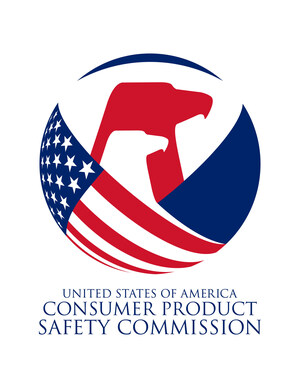CPSC Announces State Grants on Pool and Spa Safety Now Available
Program seeks to advance cause of Virginia Graeme Baker Pool & Spa Safety Act
WASHINGTON, May 10 /PRNewswire-USNewswire/ -- The U.S. Consumer Product Safety Commission (CPSC) announced today that the Virginia Graeme Baker Pool and Spa Safety Act's (P&SSAct) State Grant program is now accepting applications for funding from eligible states. The P&SSAct intends to enhance the safety of pools and spas by reducing child drownings and suction entrapment incidents and educating the public on the importance of safety devices and constant supervision of children in and around water. CPSC is the lead agency in implementing and enforcing the Act, which was signed into law in December 2007.
(Logo: http://www.newscom.com/cgi-bin/prnh/20030904/USCSCLOGO)
The P&SSAct requires that all public pools and spas have anti-entrapment drain covers, and in certain circumstances, an additional anti-entrapment device. To be eligible to apply for a grant, the state statute must include the requirements for public pools and spas; in addition, it must require all residential pools to have a barrier completely surrounding the pool such as a 4-foot fence and, where the house serves as the fourth side of the barrier, a pool safety cover or door alarms. Most of the nearly 300 annual reported drownings that involve children younger than five occur in residential pools.
"CPSC's goal is to keep children safe and to prevent drownings and nonfatal submersions and entrapment incidents. The State Grant program can expand our reach and allows us to partner with eligible states," said CPSC Chairman Inez Tenenbaum. "CPSC has prepared guidance and model legislation to assist all states and help them become active participants in the enforcement and education of this child safety law. State and local governments should view CPSC's guidance as a floor from which they can add additional layers of protection to their legislation."
The Minimum Eligibility Criteria for the States to Apply for a VGB Grant requires states to have a statute mandating all pools and spas to be equipped with entrapment prevention devices and residential pools to have safety barriers. Two documents are available on the www.PoolSafety.gov website for assisting states in applying for a grant. These are: 1) the Technical Guidance for Section 1406 of the Act: http://www.poolsafety.gov/grant.pdf; and 2) Model Legislation: http://www.poolsafety.gov/modelvgb.pdf. The Centers for Disease Control and Prevention (CDC) is administering the grant program and will be accepting applications until the May 28, 2010 deadline. A link to additional information about applying for a grant can be found at www.poolsafety.gov/officials.html.
"We want our children to enjoy the healthy benefits of exercise and water sports," said Dr. Grant Baldwin, director of the Division of Unintentional Injury Prevention within CDC's National Center for Injury Prevention and Control. "We can assist states to implement programs to reduce these tragic deaths—not only in public pools but also in backyard pools. Working together, we can keep our children safe and help them live to their full potential."
Chairman Tenenbaum added, "Rep. Debbie Wasserman-Schultz from Florida, who championed the legislation through Congress, played a key role in providing the funding for this important program which is aimed at helping states improve the safety of their pools and spas."
The P&SSAct requires CPSC to ensure that the requirements are consistent with previously-published guidelines for pool barriers and entrapment prevention and with current or revised national performance standards.
CPSC's website www.PoolSafety.gov serves as a repository for information about the P&SSAct. The site provides information for the general public, the swimming pool and spa community, state and local officials and the media.
Drowning can occur if a child gets access to the pool during a short lapse in adult supervision. To reduce the risk of drowning, all pool owners should adopt the requirements of this child safety law, including installing new safety drain covers and physical barriers, such as a fence completely surrounding the pool with self-closing, self-latching gates. If the house forms a side of the barrier, use alarms on doors leading to the pool area and/or a power safety cover over the pool.
CPSC Hotline: (800) 638-2772 |
|
CPSC Media Contact: (301) 504-7908 |
|
SOURCE U.S. Consumer Product Safety Commission
WANT YOUR COMPANY'S NEWS FEATURED ON PRNEWSWIRE.COM?
Newsrooms &
Influencers
Digital Media
Outlets
Journalists
Opted In





Share this article